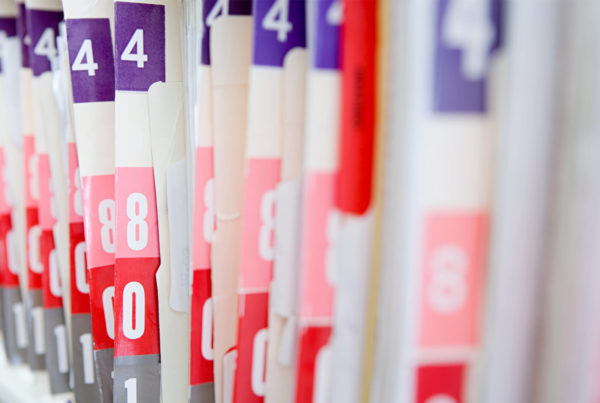Pediatric psychiatric polypharmacy is the process of treating children and adolescents with more than two novel psychiatric medications for one or more mental health disorders. It has become a surprisingly common practice in the psychiatric treatment of youth despite little evidence that combining psychiatric drugs improves overall treatment efficacy. This is even more troubling when combined with the well-known fact that more complex drug regimens are associated with a greater risk of drug-drug interactions, side effects, and cost.
Unfortunately, the science of child and adolescent psychiatry has not caught up with common practice, giving prescribers very little guidance when making their treatment decisions. For example, many commonly prescribed drugs used to treat youth with emotional and behavioral problems are considered “off label” medications because they have not been approved by the Food and Drug Administration to treat their particular condition, or they have only been approved in adults and have not been sufficiently tested in children. In addition, when it comes to prescribing more than one medication, there are only a handful of studies that compare monotherapy with co-therapy (two medications) and no known studies looking at drug combinations of three or more agents.
In the last 15 years, however, polypharmacy rates have been on the rise; it is now estimated that one in five kids in outpatient samples who are treated for emotional or behavioral problems are treated with more than one psychiatric medication – and the rates are higher for those with chronic mental illness or those who suffer from more than one psychiatric illness (co-morbidities). It has been described that the number of out-of-home placements (hospitals, foster homes, group homes, etc.) that a young person has experienced is directly related to the likelihood that the youth will be treated with multiple simultaneous psychiatric medications. In fact, by the time young patients reach the level of residential treatment, about half are on three or more psychiatric medications.
Hopefully, most providers would subscribe to the idea that for any illness, a patient should be on the least amount of medication to do the job. A higher dose of medicine or adding a second or third medicine that does not result in noticeable improvement only increases the likelihood of drug interactions and side effects and therefore should be avoided and should be considered irrational polypharmacy. However, treating a patient with multiple medications because they have co-morbid conditions that require different medications (like attention deficit/hyperactivity disorder (ADHD), with mood or anxiety disorders) could be considered rational use of polypharmacy. Furthermore, treating one “treatment resistant” condition like bipolar disorder with two or more medications (usually with different mechanisms of action) could also be justifiable, particularly if the combination is well tolerated by the patient.
In 2011 KidsPeace began to take a very close look at polypharmacy among those children we treat in our residential treatment facilities in Pennsylvania. With the help of a nationally recognized psychopharmacology consultant, we created a standard operating procedure aimed at safely reducing polypharmacy whenever possible in the residential population, reflecting the need for polypharmacy in appropriate cases.
Polypharmacy for KidsPeace’s residential treatment programs was defined by any of three parameters:
- A youth being on more than three psychiatric medications
- A youth being on more than one psychiatric medication within the same class (e.g. antidepressant, mood stabilizer, stimulant, antipsychotic, etc.)
- A youth being on a dose of any agent higher than the maximum recommended dose as determined by the KidsPeace Pharmacy & Therapeutics Committee.
All clients in KidsPeace residential treatment were tracked and monitored. If any defined form of polypharmacy was initiated or continued, prescribers were required to justify why the particular medication regimen was deemed necessary. These cases also required approval from the KidsPeace medical director and specific polypharmacy consent from a parent or guardian as well as consent from any youth aged 14 or older.
Prior to the July 2011 roll out of the KidsPeace residential polypharmacy standard operating procedure, 35-40% of clients in Pennsylvania residential were on more than three psychiatric medications. In addition, around 30% of clients were taking two or more psychiatric medications in the same class. In the span of 6 months, the number of clients taking more than three psychiatric medications fell to around 12% and the number taking two or more medications from the same psychiatric class fell to around 10%. By the end of the first year, the overall polypharmacy rate (of any defined type) for clients in KidsPeace residential was less than 10% and the number has not been above 15% since – exemplifying the resolve that KidsPeace has demonstrated for this important initiative.
There may have been concerns that reduction in polypharmacy would lead to increased behavior problems or prolonged lengths of stay. Fortunately, this simply wasn’t true. Overall, it appears that KidsPeace residential clients were able to show the necessary improvements required to earn discharge on less medication, emphasizing the importance of non-medication psychosocial interventions such as individual therapy, family therapy, group therapy, and milieu therapy. In fact, between 2012 and 2016, only 3.7% of clients were discharged from KidsPeace Pennsylvania residential programs on more than three psychiatric medications or more than two medications of the same class. A recent scientific study has indicated that in the supportive milieu of residential treatment, thoughtful reassessment of diagnoses and prescriptions can result in the use of less psychiatric medication while also resulting in a reduction in assaultive incidents and the use of physical restraints. Another study showed that reduction of polypharmacy resulted in improved short and long term outcomes while saving money on discontinued medications (in this study a yearly savings of over $250,000 in less than 200 patients).
At KidsPeace, when a patient is referred for treatment in our residential programs, our providers begin their initial assessment by carefully reviewing records from previous providers and performing a skillful interview of the client and family members or guardians. Patients are often referred to KidsPeace already on polypharmacy, and many times the review of records and clinical interviews indicate that some medications are simply not working and can be safely tapered and discontinued. While this re-assessment is occurring, residential clients are enrolled in a comprehensive therapeutic program that utilizes a mixture of individual, group, and family based therapies to recognize and increase control over negative moods, broaden self-esteem, bolster coping skills, improve decision making, and help the young person maintain the safety of themselves and those around them. When medications are prescribed, they are matched with a diagnosis or specific symptoms, utilizing evidence-based data to support their use. If a patient’s symptoms are not responding appropriately to the current treatment regimen and a new medication is to be added, we look at whether it is possible that one of the other medications can be taken away.
As our clients improve, we continually assess the ongoing need for their medication regimen; progress in treatment sometimes means that certain medications can be safely reduced or discontinued and the best time to accomplish this is while the individual is part of the structured and secure setting of residential treatment. We recognize that some of the patients we serve are struggling with multiple psychiatric diagnoses and will require at times aggressive medication management, but we approach all patients with the hope that clinical improvement may result in the reduction of unnecessary polypharmacy.
Following the success of our efforts in residential, we have expanded our polypharmacy reduction efforts to KidsPeace Hospital. The acute hospital patient presents unique challenges in terms of managing polypharmacy; hospital patients are with us for a much shorter period of time, which tends to make meaningful medication reduction efforts more difficult, but no less important. Discharge from KidsPeace Hospital on more than one antipsychotic medication now requires KidsPeace Hospital medical director approval.
Polypharmacy reduction has become a goal in our community programs as well. KidsPeace has expanded our partial hospitalization programs to provide alternatives to pharmacologic-based treatments, and we now offer evidence-based therapies such as Trauma Focused Cognitive Behavior Therapy (TF-CBT), and Parent-Child Interaction Therapy (PCIT); both of which can provide sources of immense healing for patients and their families without relying solely on medications.
We are quite proud of the polypharmacy reduction we have been a part of at KidsPeace, but we want to make it clear that reduction of polypharmacy is not our only goal. Helping youth, their families, and communities heal has been, and will always be, central to the KidsPeace mission. Appropriate use of psychiatric medication is an essential part of that healing process, but whenever polypharmacy is present, it must be rational and justifiable.
Advice for Parents:
Psychiatric medications can be life-saving treatments that some patients may require for many, many years. Patients, parents and guardians should NEVER take it upon themselves to reduce or discontinue psychiatric medications for themselves or their loved ones. If there is concern about medications, you should have an open discussion with your provider:
- Ask the provider to go over the entire list of psychiatric medications and ask them to explain what each medication is treating.
- Ask about the classes of medications (antidepressant, mood stabilizer, antipsychotic, stimulant, etc.) and have the prescriber provide an explanation if two or more medications in the same class are recommended.
- Be prepared to describe which medications are working well, which are not working, and which have side effects that are unacceptable.
- Ask the provider if there are alternatives where a single medication can be used to treat more than one symptom or diagnosis (for example, certain antidepressants are helpful for both depression and anxiety disorders).
- Ask the provider about evidence-based non-medication therapies to treat troublesome symptoms or behaviors. There are excellent cognitive/behavioral treatments, family therapies, and parental techniques that have been shown to be extremely effective for nearly all kids with emotional and behavioral problems. It is important to understand that some of the best outcomes in child and adolescent psychiatry come about when talk therapy, parent training, and behavioral modification are coupled with appropriate medication therapy. Families often ask about what they can do to help their affected loved one; being willing to commit to ongoing therapy is one of the most powerful things families can do together to promote healing and well-being.
- Tell the provider that there is a concern about polypharmacy and directly ask the provider if there are any medications that can be safely reduced or discontinued.
All patients have the right to ask these questions, and should feel empowered to form a partnership with their psychiatric providers to reach their mutually agreed upon goals. Both parties (clients, families and providers) should approach the situation with open minds, a willingness to discuss issues, and a desire to learn from one another.






